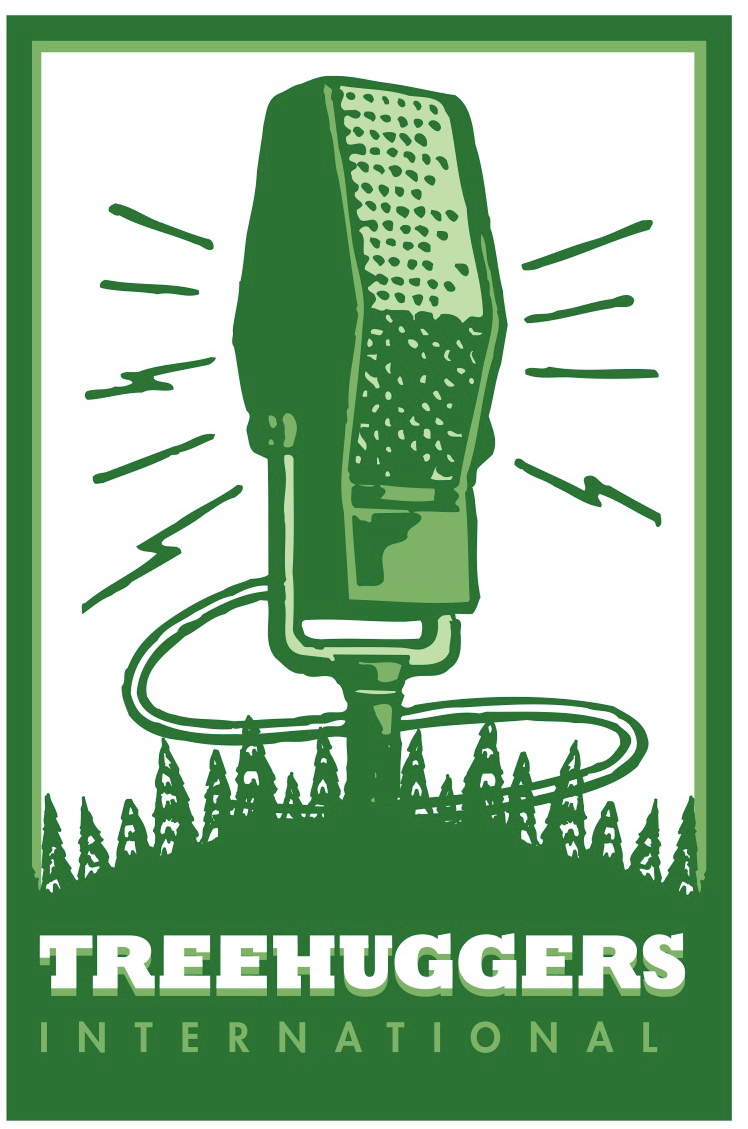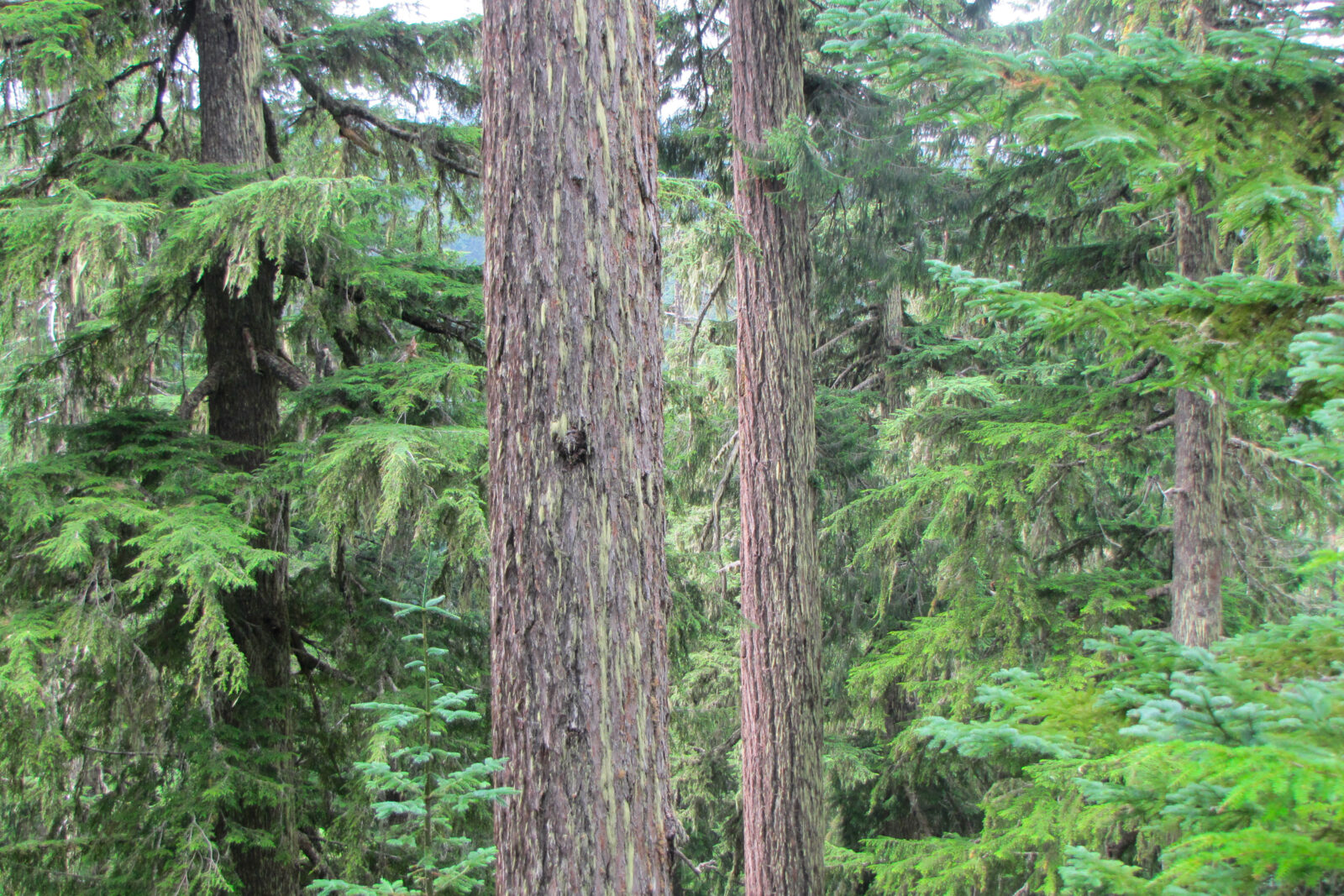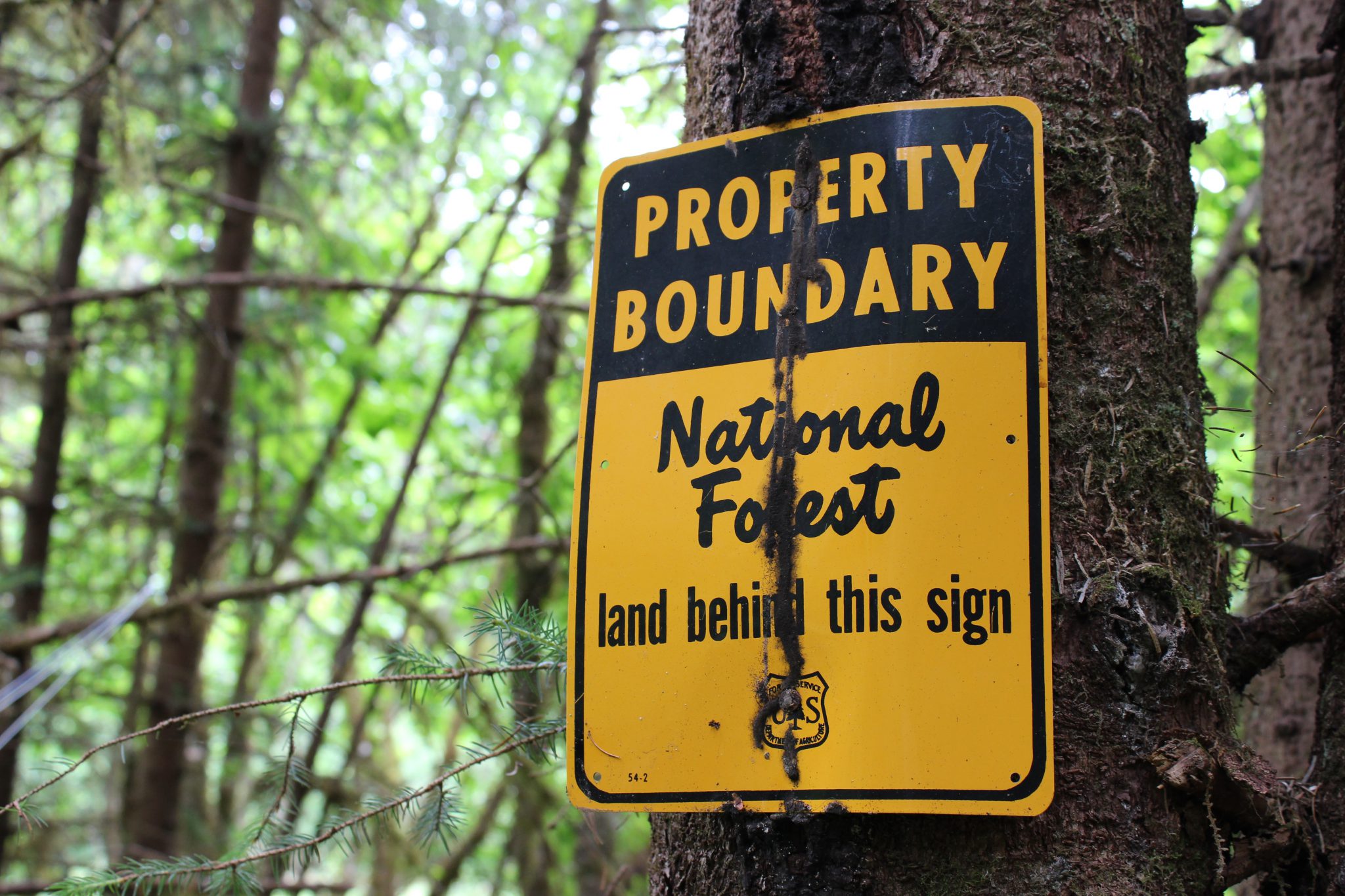 This edition of Treehuggers International originally aired on Sept. 6, 2010, on KBZT FM 94/9 in San Diego. Special thanks to Greg MacArthur and the staff at the CBS Radio cluster in Seattle for their assistance making this show possible. Additional thanks to Andrea Imler at the Wilderness Society.
This edition of Treehuggers International originally aired on Sept. 6, 2010, on KBZT FM 94/9 in San Diego. Special thanks to Greg MacArthur and the staff at the CBS Radio cluster in Seattle for their assistance making this show possible. Additional thanks to Andrea Imler at the Wilderness Society.
Treehuggers International is pleased to welcome Mike Anderson, senior resource analyst with the Wilderness Society’s Pacific Northwest office in Seattle, to talk about roadless areas and the Wilderness Society’s role in the creation of the Roadless Area Conservation Rule.
Some 58 million acres of land managed by the U.S. National Forest are made up of inventoried roadless areas where there has never been any kind of development, permanent human activity, and where it’s possible humans have never been at all. Often adjoining National Parks or Wilderness areas, these 58 million acres are primarily in areas where there are no marked inroads of civilization, and the land remains in a wild, primitive state. The drinking water of 60 million Americans begins in some 2,000 watersheds in the nation’s National Forests, and most of those watersheds are in roadless areas.
In the case of roadless areas, a road is described as any kind of thruway constructed for motor vehicle use, generally intended for mining or logging operations on public land. While paved roads also cross National Forests, most forest roads are dirt or gravel and in varying degrees of condition, and were typically built for resource extraction over a limited period of time. In other words, most forest roads were never intended to be used long-term, and until recently there was never any process on the books to decommission such roads.
Unless specifically signed otherwise, generally for mining or logging operations, forest roads may be used by the public for recreation to access trailheads for hiking, camping, hunting, fishing or backpacking. Forest roads are also permitted for off-road vehicle use. In fact, over the last 10 years, off-road vehicles have become an increasingly frequent sight on National Forest roads. In some cases, individual National Forests have re-graded or even re-routed hiking trails in order to make them accessible to off-road vehicles (off-roaders typically pay larger fees for National Forest use), thereby modifying a trail into a road.
Because of the primitive nature of many of the 386,000 miles of Forest Service roads – far more miles of road than the total of the U.S. Interstate Highway System – in 1967 the Forest Service began to catalogue every roadless area in National Forests for consideration as Wilderness. According to the 1964 Wilderness Act, areas to be considered for Wilderness designation must be “where the earth and its community of life are untrammeled by man,” and where no human activity has occurred. While an addendum to the Wilderness Act in 1975 does allow for some previous modification for eastern National Forests, the rule of thumb is if there’s a road, the area is no longer wilderness by definition, and therefore, cannot be considered for Wilderness designation.
While some Forest Service managers and resource extraction operations have deliberately constructed roads in order to negate an area from Wilderness consideration, the road-building process is generally tightly-controlled because of the expense the Forest Service must put forward in the years after a road is built for maintenance, and to a lesser extent, safety. Simply building a road brings with it issues of erosion and resource degradation, and over time traffic on such roads may lead to litter accumulation, pollution of adjoining waterways, increased amounts of silt, species loss, and what is politely described as the loss of “aesthetic” appeal.
Today, the Forest Service has infinitely more miles of roads to manage than it can realistically afford to maintain, and a movement has been underway to allow some seldom-used roads with little or no trailhead access or remaining resource use to “go back to nature” by no longer maintaining them. However, with the rise in popularity of thrillcraft and other off-road vehicles (ORVs) that can chew across the land, scale mountains and leave vast swaths of ruts and environmental destruction in their wake, the corridors of abandoned or seldom-maintained forest roads may still facilitate entry for ORVs into otherwise primitive, wilderness-quality backcountry. If a roadless area is severely compromised by unregulated or illegal ORV use, it too may no longer be considered “untrammeled by man,” and thereby removed from Wilderness consideration.
Beginning in 1997, under the leadership of U.S. Forest Service supervisor Michael Dombeck, the Forest Service undertook its most intensive public policy discussions and comment periods since the 1960s in order to come up with a cohesive plan for managing National Forest roadless areas. From 1997 to 2000, more meetings were held and more feedback cards were returned than any other project ever undertaken by the Forest Service since the initial passage of the Wilderness Act. The response from citizens and communities around the nation called for a steep reduction in the amount of new roads constructed into roadless areas, and for remaining roadless areas to remain wild.
In what became the most far-reaching federal land management document since the Wilderness Act, the Roadless Area Conservation Rule was adopted by President Bill Clinton on Jan. 12, 2001, and immediately implemented by the U.S. Department of Agriculture – the Forest Service’s parent agency.
While the operating plan to conserve the 58 million acres of National Forest areas from almost all logging and road construction was in place, the Roadless Rule did not specifically put a moratorium on new road-building or set aside all roadless areas from potential development, but it did call for current roadless areas to remain wild and subject to Wilderness consideration. Old forest roads would return to nature through a process of “rewilding,” with new bans on road construction, logging and mining. Considerable exceptions were made in the final 2001 draft for the Tongass National Forest in Southeast Alaska, itself a sidebar story that has become as notable as the Roadless Rule saga itself.
Despite the immense savings to taxpayers with the abandonment of no-longer needed forest roads, within days of taking office in early 2001 the new Bush administration put the Roadless Rule on hold, saying it wanted to explore other options in the implementation of the act. In 2005 the Bush administration put forward a convoluted plan to allow state governments to designate their own roadless areas, which required governors to petition the federal government if they wanted to protect National Forest areas in their states, reducing the in-depth, three-year Forest Service study and public comment workshop to a mere guide for consideration.
The following year, the Bush plan was struck down by a federal court, which said it “established a new regime in which management of roadless areas within the national forests would, for the first time, vary not just forest by forest but state by state. This new approach raises a substantial question about the rule’s potential effect on the environment.” The same court followed up its initial ruling two months later with a ban on road construction in connection with hundreds of oil and gas leases issued by the Bush administration in areas which would have been protected under the Roadless Rule in Colorado, Utah and North Dakota, a result of Vice President Cheney’s secret meetings with the nation’s commercial energy leaders in 2001.
Currently, U.S. Secretary of Agriculture Mike Vilsack has been granting the Roadless Rule yearlong extensions since the Obama administration came into office in 2009, and while we at Treehuggers International appreciate the willingness to abandon Bush-era plans for roadless management, the science and public response detailed in the roadless study remains intact, and to us, trumps all else. We believe it should be enacted as it was intended at the end of 2000. The current trend of yearlong extensions simply appears designed to leave this thoughtful piece of science, management and policy in a state of permanent limbo, subject to the whims of individual administrations.
Policy matters aside, lace up your boots and visit a roadless area near you. After experiencing the wild character of your chosen locale, go home and write a letter to elected officials in Washington D.C., and urge them to lean on the Obama administration to adopt the Roadless Rule in full. You can send e-mails to your state’s U.S. Senators and your community’s U.S. Congressperson, but while e-mails are convenient, nothing beats a phone call or an actual, hand-signed letter sent in the mail to your representative.
Some natural sound mixed into this program is courtesy of Richard Nelson and Amy Gulick’s Salmon In the Trees multimedia project.
Photo of Crabtree Valley, Linn County, Oregon © 2013 Tommy Hough, all rights reserved.
Photo of National Forest boundary sign © 2021 Matt Smythe, not intended for duplication or republication.
More about this post at:
- Roadless Overview, U.S. Forest Service
- Frequently Asked Inventoried Roadless Area Questions, U.S. Forest Service Alaska Region
- Timeline of the Roadless Rule, Earthjustice
- Kamliopsis Wilderness and Wildlands, Oregon Wild
- What Went Wrong with the Roadless Rule in the Tongass? (Alaska Public Media; 4/27/22)
- Proposed Roadless Area Conservation Act: Work Still Needed (Andy Kerr; 3/5/21)
- Roadless Rule Garners Support (Spokane Spokesman-Review; 7/24/10)
- Obama Administration Extends Time-Out on Roadless Decision (New York Times; 5/28/10)
- Roadless Rule Offsets Effects of Changing Climate (The Missoulian; 3/29/10)
- Jurisdiction at the Heart of Roadless Rule Battle (Denver Post; 3/11/10)
- New Obama Forest Plan Leaves Roadless Rule Intact (Grist; 8/14/09)
- Court Restores Restrictions on Road Building in National Forests (Los Angeles Times; 8/6/09)
- Clinton-Era Roadless Rule is Back, for Now (High Country News; 10/16/06)
- Logging Starts on First Sale in Roadless Area (Associated Press; 8/7/06)
- As States Ponder Protection Roadless Forests Unravel (High Country News; 7/24/06)
- Forest Service to Corral Off-Road Vehicles (NBC News; 11/2/05)
- New Wilderness Roads in States’ Hands (Associated Press; 7/13/05)
- New Plan to Develop Roadless Forests (Associated Press; 5/5/05)
- Bush Administration Plans to Scrap Roadless Rule Forest Protections (Grist; 7/14/04)
- Roadless Rule for Forests Set Aside (Washington Post; 7/13/04)
- Governors Could Get Wilderness Areas Open to Development (San Francisco Chronicle; 6/10/03)
- Cantwell Plans to Reintroduce Roadless Rule Legislation (Seattle Post-Intelligencer; 5/20/03)
- Honor Earth Day in Roadless Areas (Seattle Post-Intelligencer; 4/21/02)
- Bush Fails to Defend Roadless Rule (High Country News; 7/30/01)
- Bush Will Modify Ban on New Roads for U.S. Forests (New York Times; 5/4/01)
- Road Ban Set for One-Third of U.S. Forests (New York Times; 1/5/01)
- Clinton Proposes Wider Protection for U.S. Forests (New York Times; 10/14/99)
- Faulting Agencies, Judge Halts Logging Deal (New York Times; 8/5/99)


